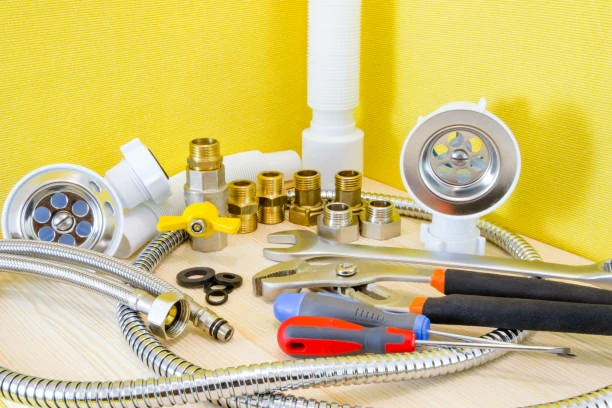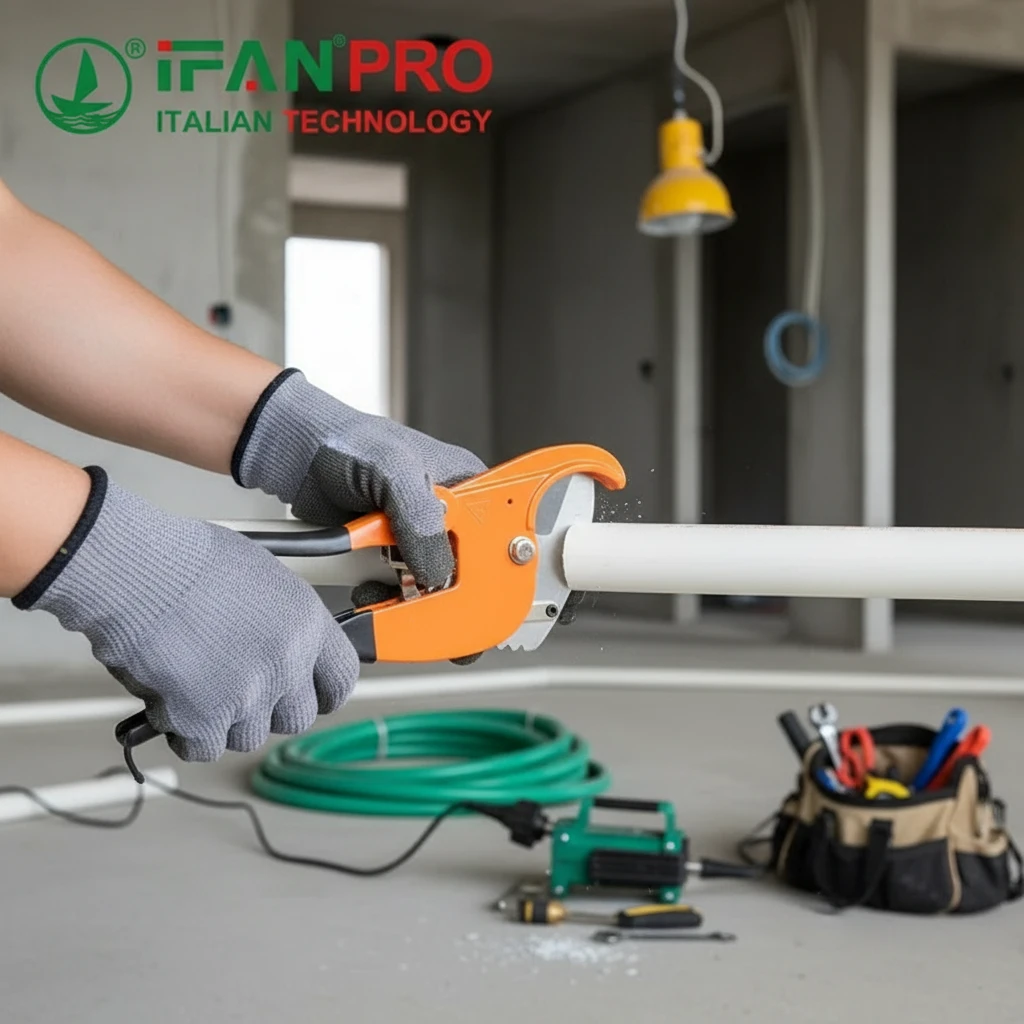Introduction to PEX Plumbing
PEX (cross-linked polyethylene) plumbing has revolutionized floor heating systems with its flexibility, durability, and ease of installation. PEX Plumbing serve as efficient conduits for hot water, providing uniform heat distribution and enhanced comfort in residential and commercial buildings. Understanding the advantages, installation processes, and maintenance of PEX in floor heating systems ensures optimal performance and longevity.
Benefits of PEX in Floor Heating
Flexibility and Versatility
PEX pipes bend easily, allowing for custom layouts that suit various room shapes and sizes. This flexibility reduces the need for fittings and joints, minimizing potential leak points.
Durability
PEX resists corrosion, scaling, and chemical buildup. These properties ensure a long service life, even under continuous exposure to hot water.
Uniform Heat Distribution
PEX provides consistent heat across the floor surface, eliminating cold spots. This even distribution enhances comfort and energy efficiency.
Ease of Installation
PEX installation requires fewer tools and fittings compared to traditional materials. This simplicity reduces labor costs and installation time.
Common Applications of PEX in Floor Heating
Residential Heating
PEX systems warm residential spaces efficiently, enhancing comfort and reducing energy consumption. They integrate seamlessly into various flooring types, including tile, wood, and concrete.
Commercial Heating
Commercial buildings benefit from PEX floor heating through consistent temperature control. This application suits office buildings, retail spaces, and hospitality establishments.
Bathroom and Kitchen Heating
PEX systems provide localized heating in bathrooms and kitchens, offering comfort in frequently used areas. These systems prevent cold floors and enhance overall warmth.
Snow Melting Systems
PEX pipes serve in outdoor applications like driveways and walkways, melting snow and ice. This application ensures safety and accessibility during winter months.
Installation Guidelines for PEX Floor Heating
Planning the Layout
Design the layout to ensure even heat distribution. Plan for the placement of manifolds and control systems to optimize efficiency.
Securing the PEX Tubing
Secure PEX tubing using clips or staples to prevent movement during installation. Ensure consistent spacing to maintain uniform heat distribution.
Connecting to Manifolds
Connect PEX pipes to manifolds, which regulate water flow and temperature. Use compatible fittings and secure connections to prevent leaks.
Embedding in Concrete
Embed PEX pipes in concrete or screed for stability and thermal conductivity. Ensure the pipes remain at the correct depth to optimize heat transfer.
Testing the System
Test the system for leaks and pressure stability before covering the pipes. Address any issues to ensure reliable performance.
Best Practices for PEX Floor Heating Systems
Insulating the System
Insulate the area beneath the PEX pipes to prevent heat loss. This practice enhances efficiency and reduces energy consumption.
Controlling Temperature
Install thermostats and control systems to regulate water temperature. This control ensures consistent comfort and prevents overheating.
Pressure Testing
Conduct pressure tests to check for leaks and system integrity. Regular testing maintains system performance and prevents potential issues.
Balancing the System
Balance the water flow across all loops to ensure uniform heating. Use flow meters and balancing valves to achieve optimal performance.
Maintenance Tips for PEX Floor Heating
Regular Inspections
Inspect the system periodically for signs of wear or damage. Address any issues promptly to prevent system failures.
Flushing the System
Flush the system to remove any buildup or debris. This practice maintains efficiency and extends the lifespan of the system.
Monitoring Water Quality
Maintain proper water quality to prevent corrosion and scaling. Use inhibitors if necessary to protect the PEX pipes.
Checking Connections
Inspect all connections for leaks or looseness. Tighten or replace fittings as needed to ensure a secure system.
Common Issues and Solutions
Airlocks
Airlocks can disrupt water flow and reduce heating efficiency. Bleed the system regularly to remove trapped air.
Pipe Damage
Physical damage to PEX pipes can cause leaks. Protect the pipes during installation and repair any damage immediately.
Temperature Fluctuations
Inconsistent water temperature affects heating performance. Ensure proper calibration of thermostats and control systems.
Scaling and Corrosion
Poor water quality leads to scaling and corrosion. Monitor water quality and use inhibitors to prevent these issues.
Comparing PEX to Other Materials
PEX vs. Copper
PEX offers greater flexibility and ease of installation compared to copper. Copper may offer superior thermal conductivity but at a higher cost.
PEX vs. CPVC
PEX provides better flexibility and freeze resistance than CPVC. CPVC may offer higher temperature resistance but is more rigid.
PEX vs. Radiators
PEX floor heating provides uniform heat distribution compared to radiators. Radiators may offer quicker heating but create hot and cold spots.
Environmental Considerations
Energy Efficiency
PEX systems enhance energy efficiency by providing consistent and controlled heating. This efficiency reduces overall energy consumption and carbon footprint.
Sustainability
PEX production uses fewer resources compared to traditional materials. Its long lifespan and recyclability contribute to environmental sustainability.
Indoor Air Quality
PEX floor heating reduces dust and allergens compared to forced-air systems. This benefit improves indoor air quality and overall health.
Conclusion
PEX plumbing offers an effective solution for floor heating systems, providing flexibility, durability, and ease of installation. Its application in residential, commercial, and outdoor settings enhances comfort and energy efficiency. Following best practices for installation and maintenance ensures optimal performance and longevity. PEX floor heating systems represent a sustainable, reliable, and efficient choice for modern heating needs.
Connecter
IFAN est un fabricant chinois de tuyaux, de raccords et de vannes en plastique, fort de 30 ans d'expérience. Si vous êtes intéressé par IFAN Raccords en cuivre, vannes en cuivre, tuyaux et raccords en plastique, veuillez nous contacter. IFAN offers you a variety of standard pipes to meet your specific needs. Click below to learn more about IFAN’s wide range of affordable and cost-effective valve products and piping system related products.
We will reply your email or fax within 24 hours.
You can call us at any time if there is any question on our production.
For more information,pls visit our webside https://ifanpro.com/
Veuillez envoyer un courrier à l'adresse suivante [email protected]
Whatsapp : + 86 19857948982














Commentaires récents